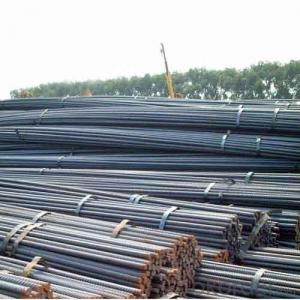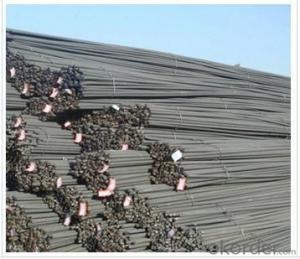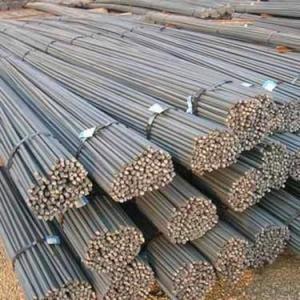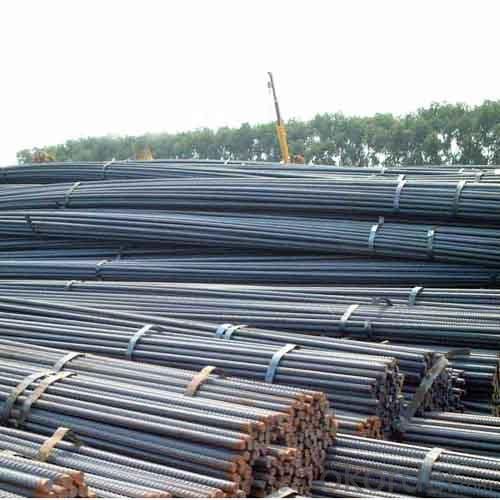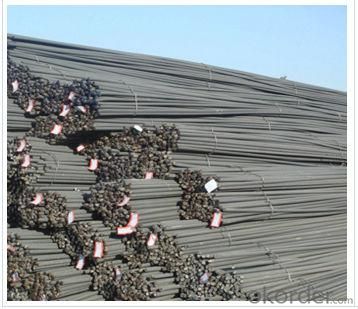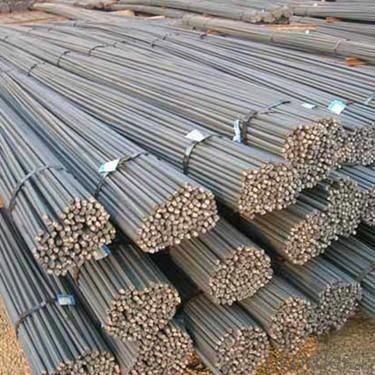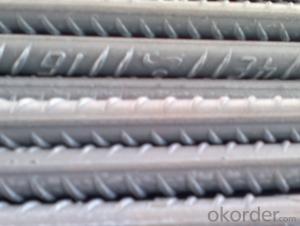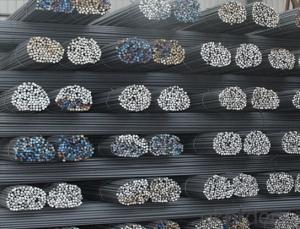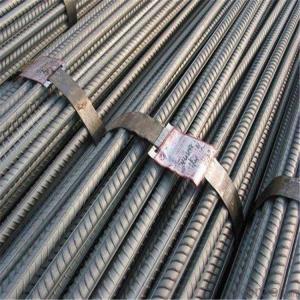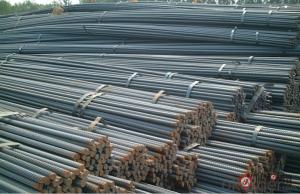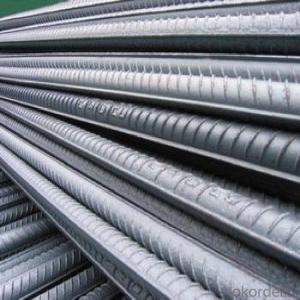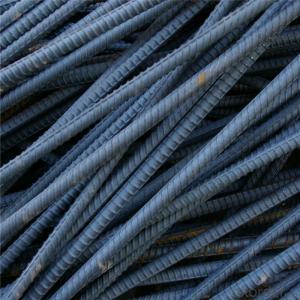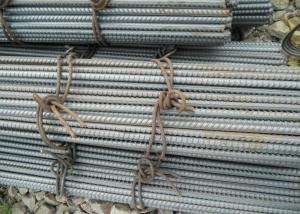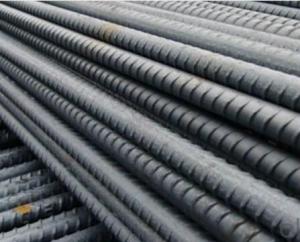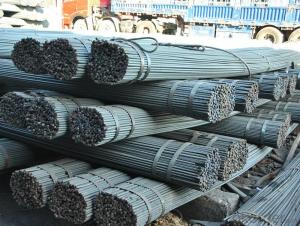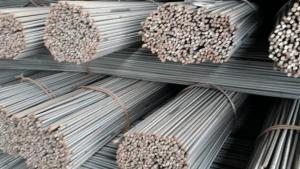BS4449-1997 deformed steel bar for construction
- Loading Port:
- Tianjin
- Payment Terms:
- TT or LC
- Min Order Qty:
- 25 m.t.
- Supply Capability:
- 100000 m.t./month
OKorder Service Pledge
OKorder Financial Service
You Might Also Like
Product Description:
OKorder is offering BS4449-1997 deformed steel bar for construction at great prices with worldwide shipping. Our supplier is a world-class manufacturer of steel, with our products utilized the world over. OKorder annually supplies products to European, North American and Asian markets. We provide quotations within 24 hours of receiving an inquiry and guarantee competitive prices.
Product Applications:
BS4449-1997 deformed steel bar are ideal for structural applications and are widely used in the construction of buildings and bridges, and the manufacturing, petrochemical, and transportation industries.
Product Advantages:
OKorder's deformed steel bar are durable, strong, and resist corrosion.
Main Product Features:
· Premium quality
· Prompt delivery & seaworthy packing (30 days after receiving deposit)
· Corrosion resistance
· Can be recycled and reused
· Mill test certification
· Professional Service
· Competitive pricing
Product Specifications:
Specifications of Middle Specification Steel Bar
1. Grade: Q235, SS400, A36, S235JR (With Boron)
2. Standard: GB, JIS, ASTM, BS
3. Diameter: 17mm—40mm
4. Length: As customer’s request, but we usually produce 6m and 12m.
5. Steel Grade: Carbon steel
6. Technique: Hot rolled or cold drawn
7. Inspection: SGS; ISO 9001:2000
8. Details about mass
Diameter | Mass | Diameter | Mass |
(mm) | (kg/m) | (mm) | (kg/m) |
17 | 1.78 | 26 | 4.17 |
18 | 2.00 | 28 | 4.83 |
19 | 2.23 | 30 | 5.55 |
20 | 2.47 | 32 | 6.31 |
22 | 2.98 | 34 | 7.13 |
24 | 3.55 | 36 | 7.99 |
25 | 3.85 | 38 | 8.90 |
Usage and Applications of Middle Specification Steel Bar
1. Middle specification steel bar is often used inconstruction and a large number of architectural and engineering structures.
2. And we can use this kind of product on the performance of the mechanical parts if the demand is not very high.
3. Some especial material steel round bar can be used for main shaft of steamer, hummer shank, with big section and supper force.

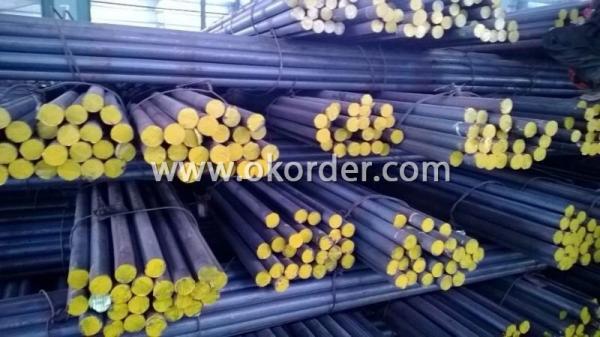
Packaging & Delivery of Middle Specification Steel Bar
Packaging Detail: All goods are packed in bundle with steel strips and shipped by break bulk vessel or container (depend on target market and different ports)
Delivery Detail: 45 days
Trade terms: FOB, CFR, CIF
MOQ: 25 tons per specification; we can negotiate the quantity if the specification is normal or we have stock of one specification.
Weight: Theprice invoicing on theoretical weight basis or actual weight basis depends on customer’s request.
Shipment: The shipment of bulk break or container is depends on customer’s request and the situation of the port of destination.
Documents given: Full set of original clean on board bill of lading; Original signed commercial invoice; Original packing list; Policy of insurance; Certificate of origin and what the target market needs.
Note: a. FOB Jinzhou can be USD 10 cheaper than FOB Tianjin. b. The risk of the commodity shall be transferred to the buyer from the moment of the commodity be loaded on board.
Production Flow of Middle Specification Steel Bar
We use advanced equipments like Electric Arc Furnace, Ladle Furnace and Vacuum Degasser to produce our products.
Our process is EAF+LF+VD+ Forged+ Heat Treatment
The flow of fabrication is Material prepare (billet) — heat up — rough rolling — precision rolling — cooling — packing — storage and transportation
Quality Assurance of Middle Specification Steel Bar
1. We will strictly inspect our production that we sold according to the customer’s request.
2. Quality should be in conformity with the specification of the manufacturer. Quantity and packing conditions should be in conformity with the term in the contract.
3. Should the packing found damaged, the buyer has the right to claim to the seller.
FAQ:
FAQ:
Q1: Why buy Materials & Equipment from OKorder.com?
A1: All products offered byOKorder.com are carefully selected from China's most reliable manufacturing enterprises. Through its ISO certifications, OKorder.com adheres to the highest standards and a commitment to supply chain safety and customer satisfaction.
Q2: How do we guarantee the quality of our products?
A2: We have established an advanced quality management system which conducts strict quality tests at every step, from raw materials to the final product. At the same time, we provide extensive follow-up service assurances as required.
- Q: How are steel rebars bent or shaped to fit specific construction requirements?
- Steel rebars are bent or shaped to fit specific construction requirements using various methods such as manual bending, mechanical bending machines, or hydraulic bending machines. These techniques involve applying force to the rebar, which causes it to bend or take on a desired shape. The specific method used depends on the complexity of the required shape and the quantity of rebars needed.
- Q: Can steel rebars be used in structures with limited maintenance access?
- Yes, steel rebars can be used in structures with limited maintenance access. Steel rebars are commonly used in construction due to their durability and strength. They can withstand various environmental conditions and require minimal maintenance. Additionally, their flexible and versatile nature allows them to be easily integrated into structures with limited maintenance access, making them a suitable choice for such projects.
- Q: What is the minimum cover required for steel rebars in concrete structures?
- The minimum cover required for steel rebars in concrete structures typically depends on the specific design requirements and local building codes. However, a commonly accepted guideline is to have a minimum cover of at least 1.5 inches (or 40 millimeters) for rebars in reinforced concrete structures. This cover helps protect the steel reinforcement from corrosion, fire, and other potential hazards, ensuring the durability and strength of the concrete structure.
- Q: What is the role of steel rebars in reinforced concrete beams?
- The role of steel rebars in reinforced concrete beams is to provide tensile strength and reinforcement to the concrete. Concrete is strong in compression but weak in tension, so the steel rebars are embedded within the concrete to carry the tensile forces and prevent cracking or failure of the beam. The rebars distribute the applied loads throughout the beam, increasing its overall strength and durability.
- Q: Can steel rebars be used in precast concrete applications?
- Precast concrete applications can make use of steel rebars. When referring to precast concrete, it means the process of casting concrete elements like walls, slabs, or beams in a controlled environment before transporting them to the construction site for installation. Steel rebars, which are typically made of carbon steel and have ribs on their surface to enhance adhesion to the concrete, are commonly utilized to reinforce precast concrete elements. The utilization of steel rebars in precast concrete applications comes with several advantages. Firstly, the presence of rebars increases the overall strength and durability of the precast concrete elements, enabling them to handle higher loads and reducing the risk of structural failure. Additionally, rebars enhance the resistance of precast elements to cracking and shrinkage, thereby ensuring better long-term performance. Furthermore, steel rebars facilitate the efficient transfer of tensile forces within precast concrete elements. While concrete exhibits excellent compressive strength, it is relatively weak in tension. By incorporating rebars into precast elements, the tensile forces generated during service can be effectively absorbed by the rebars, preventing cracks and maintaining the structural integrity of the element. Moreover, steel rebars offer flexibility in design and construction. Precast concrete elements can be manufactured in a wide range of shapes and sizes to meet specific project requirements, and the inclusion of rebars allows for greater design freedom. This enables the creation of complex and intricate precast elements that can be customized to suit various architectural and structural designs. In conclusion, steel rebars are crucial components in precast concrete applications. Their inclusion significantly enhances the strength, durability, and performance of precast concrete elements. By resisting tensile forces and providing structural integrity, steel rebars play a vital role in ensuring the safety and longevity of precast concrete structures.
- Q: How do steel rebars affect the overall aesthetics of a building?
- Steel rebars do not have a direct impact on the overall aesthetics of a building as they are typically concealed within the concrete structure. However, their presence is crucial for structural integrity and ensuring the building's safety, which indirectly contributes to the overall aesthetics by allowing for more creative and innovative architectural designs.
- Q: How do steel rebars contribute to the ductility of a structure?
- Steel rebars contribute to the ductility of a structure by providing reinforcement and increasing its ability to withstand deformation without fracturing. The presence of rebars allows concrete to handle higher tensile forces, preventing brittle failure and enhancing the overall strength and flexibility of the structure.
- Q: How are steel rebars protected against mechanical damage during construction?
- Various methods are employed to protect steel rebars against mechanical damage during construction. One effective approach involves the use of protective covers or sleeves made from materials like plastic or rubber. These covers are placed over the rebars, creating a physical barrier that shields them from potential sources of damage, such as heavy machinery or construction equipment. Another method of safeguarding rebars is the utilization of rebar caps or safety caps. These caps are specifically designed to fit over the ends of the rebars, providing an additional layer of protection against mechanical damage. They effectively prevent the rebars from being bent, crushed, or harmed by accidental impacts. In addition to physical protection, proper storage and handling practices are crucial to prevent mechanical damage to rebars. It is imperative to store rebars in designated areas that are devoid of any potential sources of damage, such as sharp objects or heavy materials. Furthermore, workers must employ proper lifting techniques when handling rebars and avoid dragging them on rough surfaces, as this can lead to scratches or other forms of damage. Moreover, regular inspections are conducted during construction to ensure that rebars remain undamaged and uncompromised. Any rebars exhibiting signs of damage, such as bends, cracks, or deformations, are promptly replaced to maintain the structural integrity of the construction project. By implementing these protective measures, steel rebars can be effectively shielded against mechanical damage during construction. This ensures their ability to provide strength and reinforcement to the structures in which they are utilized.
- Q: Can steel rebars be used in coastal areas?
- Steel rebars are indeed suitable for coastal areas, but it is crucial to take into account the potential consequences of corrosion caused by saltwater and high humidity in such environments. To address this concern, stainless steel rebars or epoxy-coated rebars can be utilized, as they possess superior resistance against corrosion. These alternative choices provide a protective layer that prevents direct contact between the steel and the corrosive elements. Furthermore, regular maintenance and periodic examination of the rebars are essential in coastal areas to guarantee their long-lasting strength and structural soundness.
- Q: Does the grade three thread steel with "E" have the same information price as the ordinary three grade thread steel? Is there a big difference?
- Hello, with E thread steel is seismic rebar, without E is the common thread steel, general seismic thread with E was higher than that of ordinary steel prices, the price difference between 50 and 100 yuan, according to the specific market situation.
Send your message to us
BS4449-1997 deformed steel bar for construction
- Loading Port:
- Tianjin
- Payment Terms:
- TT or LC
- Min Order Qty:
- 25 m.t.
- Supply Capability:
- 100000 m.t./month
OKorder Service Pledge
OKorder Financial Service
Similar products
Hot products
Hot Searches
Related keywords
